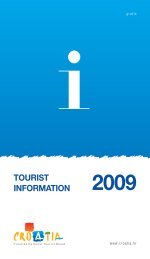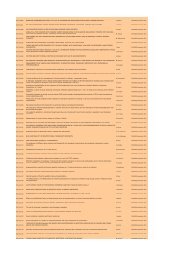Profilaksa DVT kod velikih ortopedskih operacija - Depol ...
Profilaksa DVT kod velikih ortopedskih operacija - Depol ...
Profilaksa DVT kod velikih ortopedskih operacija - Depol ...
Create successful ePaper yourself
Turn your PDF publications into a flip-book with our unique Google optimized e-Paper software.
20 - 22 September 2012, Opatija, Croatia<br />
AUTOLOGOUS CHONDROCYTE TRANSPLANTATION TODAY<br />
AND TOMORROW<br />
Gian Salzmann, Department of Orthopaedic and Trauma Surgery, University Medical Center, Albert-<br />
Ludwigs University Freiburg, Germany<br />
Following the 1994 pioneer work by Brittberg and colleagues autologous chondrocyte implantation has evolved<br />
significantly until today. The traditional periosteum-covered technique has retrospectively been termed first generation<br />
ACI-P. In order to reduce operating time and as well to avoid graft hypertrophy the second generation<br />
ACI-C has been introduced by replacing the periost by an artificial membrane such as collagen. While the cells are<br />
applied beneath a cover when performing first or second generation ACI, third generation ACI is matrix-assisted<br />
(m-ACI). The chondrocytes are cultured within the matrix for a certain time prior to transplantation. The idea was<br />
to give better primary stability, handling and probably partial cellular redifferentiation. As further alternatives<br />
there are ACI-Cs, where the cells are seeded within the matrix intraoperatively and consecutevily implanted to<br />
have high vitality and mitotic activity. Also bioreactor-assembled implant-ready cartilage products are on the<br />
threshold to clinical implementation, which are sought to present with an already assembled extracellular matrix<br />
at time of implantation. Furthermore one-step cartilage repair techniques are on the rise in order to reduce the<br />
traditional 2-step into a 1-step procedure.<br />
Concerning outcome data, it is now becoming increasingly apparent that ACI gives better tissue quality when<br />
compared to the concurring methods foremost in the long-term and is much better suited for larger cartilage defects.<br />
Literary information on the younger techniques is sparse and one has to await longer-term follow-up among<br />
large patient cohorts to give out treatment suggestions.<br />
Oral<br />
19




